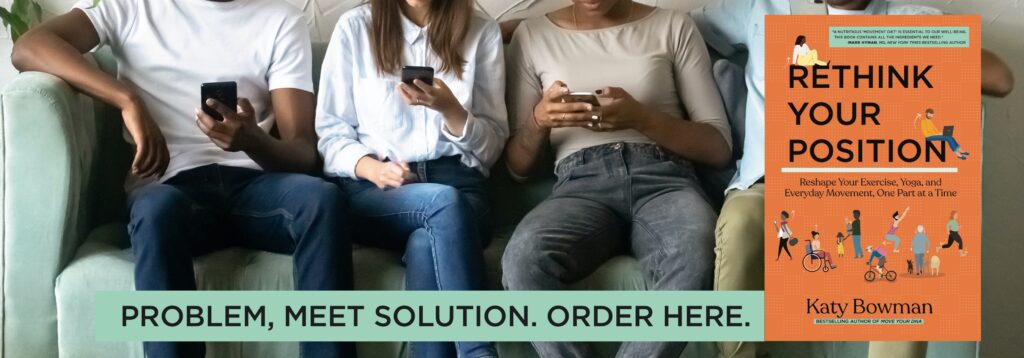Hello reader,
The article you are looking for has been edited, expanded, and now lives in the book of essays, Rethink Your Position. If you love everyday alignment and anatomy, this book is for you!
Click here to be taken to the main page of Katy Bowman's blog.
